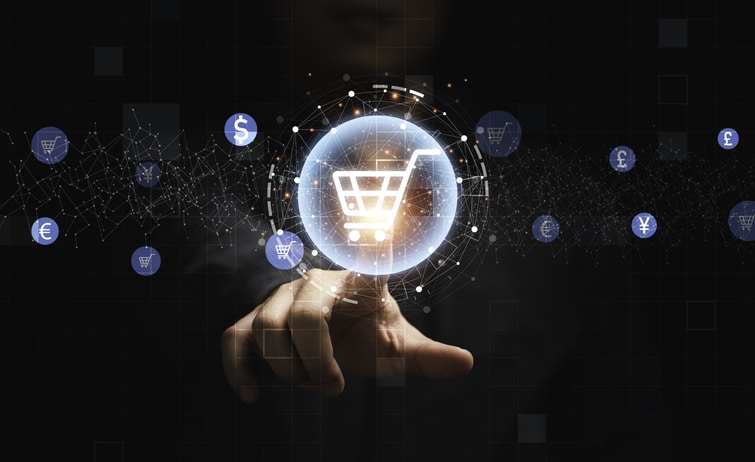Revolutionizing Retail: The Rise of Omnichannel Fulfilment

In the rapidly evolving world of retail, businesses are constantly seeking innovative ways to meet the demands of modern consumers. One such revolution is the rise of omnichannel fulfilment. Gone are the days when shoppers had to choose between shopping online or visiting a physical store. Today, the lines between these channels are blurring, and retailers are embracing a holistic approach to meet customer expectations. In this post, we’ll explore the concept of omnichannel fulfilment and how it is transforming the retail landscape.
Understanding Omnichannel Fulfilment
Omnichannel fulfilment refers to a retail strategy that seamlessly integrates various channels to provide a consistent and convenient shopping experience for customers. It goes beyond mere multichannel retailing, where businesses operate across different channels independently. Instead, omnichannel fulfilment seeks to unify all customer touchpoints, creating a cohesive and integrated experience. Learn more at https://mmqualitysolutions.com/omnichannel-fulfillment/.
The Power of Integration
To truly revolutionize retail, integration is key. By integrating various channels, such as physical stores, e-commerce websites, mobile apps, and social media platforms, retailers can create a harmonious shopping journey for their customers.
For example, imagine a customer browsing products on their smartphone while commuting to work. Later, during their lunch break, they visit a physical store to try on the items they liked. Finally, they make the purchase on the retailer’s website, using a special online promotion. This seamless integration ensures that customers can engage with a brand across multiple channels without any barriers.
Enhanced Customer Experience
The driving force behind the rise of omnichannel fulfilment is the desire to enhance the customer experience. Today’s consumers expect convenience, personalization, and a smooth transition between channels. By implementing an omnichannel approach, retailers can deliver on these expectations.
Picture a scenario where a customer orders a product online for in-store pickup. They receive an email confirming the availability of the items and can easily locate it in the store upon arrival. This not only saves the customer time but also provides a personalized experience. Plus, if the item is out of stock in the store, the retailer can arrange for home delivery or offer alternative options. Such flexibility and convenience encourage customer loyalty and drive repeat business.
Inventory Optimization
Another significant advantage of omnichannel fulfilment is the optimization of inventory management. By unifying inventory across different channels, retailers gain real-time visibility into stock levels. This visibility enables efficient inventory allocation and reduces the risk of overstocking or stockouts. For example, if an item is out of stock in a physical store, it can be fulfilled from a nearby store or a central warehouse, ensuring that customers can still obtain the product they desire.
What’s more, by leveraging data analytics and demand forecasting, retailers can better anticipate customer preferences and adjust their inventory accordingly. This data-driven approach minimizes inventory holding costs while maximizing sales opportunities.
The Role of Technology
Technology plays a crucial role in enabling and supporting omnichannel fulfilment. Point-of-sale (POS) systems, inventory management software, customer relationship management (CRM) tools, and data analytics platforms are just a few examples of technologies that help retailers execute an effective omnichannel strategy.
Plus, emerging technologies such as artificial intelligence (AI), machine learning (ML), and Internet of Things (IoT) devices are revolutionizing the way retailers interact with customers. AI-powered chatbots provide personalized recommendations and address customer queries in real time. ML algorithms analyze customer data to identify patterns and deliver targeted marketing campaigns. IoT devices enable seamless connectivity and data exchange between online and offline touchpoints, further enhancing the omnichannel experience.
Challenges and Future Trends
While omnichannel fulfilment presents numerous opportunities, it’s not without its challenges. Integration and data synchronization across multiple channels can be complex and require significant investment in infrastructure and technology. Plus, maintaining a consistent brand experience across channels requires effective communication and coordination among different departments within a retail organization.
However, despite these challenges, the future of omnichannel fulfilment looks promising. As technology continues to advance, retailers will have access to more sophisticated tools and solutions that streamline integration and data management. In addition, the increasing adoption of mobile devices and the growing popularity of voice assistants and virtual reality present new avenues for immersive and seamless omnichannel experiences.
Along with this, in the past few years, the adoption of omnichannel strategies has accelerated as a result of the COVID-19 pandemic. Retailers had to quickly adapt to changing consumer behaviours and preferences, including contactless shopping options, which became crucial during the pandemic and have remained in demand ever since.
Omnichannel fulfilment is revolutionizing the retail industry, breaking down the barriers between online and offline shopping. By integrating various channels and providing a seamless and personalized customer experience, retailers can improve customer satisfaction, build loyalty, and drive business growth.





